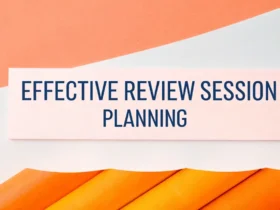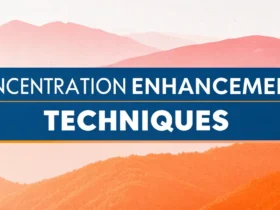Active recall. Just the sound of it makes most students tremble. It sounds like work. And let’s be honest, when you are a student, you’d rather relax. But imagine a study method so potent, so deeply effective, that it could revolutionize how you learn and retain information. What if you could face exams with newfound confidence, knowing that the knowledge is not just memorized, but truly understood and readily available?
Think back to when you last studied for a test. Did you passively reread notes, highlighting key phrases until your textbook resembled a neon sign? Or perhaps you meticulously copied definitions, hoping repetition would magically imprint the information onto your brain? These are common study habits, but studies prove they often give you a false sense of security. They feel productive, but they’re often not the most efficient route to real learning.
That’s where active recall comes in. It’s a study technique rooted in cognitive science, and it’s about far more than just memorization. It’s about actively engaging with the material, forcing your brain to retrieve information, and solidifying your understanding in the process. This article will peel back the layers of active recall, providing you with actionable strategies to integrate this powerful technique into your study routine. Get ready to ditch passive studying and supercharge your learning potential!
What is Active Recall?
Active recall, at its core, is a learning technique that prioritizes active engagement with information over passive review. Instead of simply rereading notes or passively absorbing content, active recall pushes you to actively retrieve information from your memory. Think of it as a mental workout, strengthening the connections in your brain each time you successfully recall a fact, concept, or process.
To truly get what active recall entails, you must understand what it is not. A simple contrast will do the trick.
Active Recall vs. Passive Review
The starkest contrast is with passive review, which includes rereading, highlighting, or simply listening to a lecture without active participation. These methods involve minimal mental effort and often lead to superficial understanding. The information might seem familiar during the review process, creating a false sense of mastery. However, when faced with an exam question or real-world application, the information often proves elusive.
Think of it like this: passively rereading notes is like looking at a map. You might become familiar with the roads and landmarks, but you haven’t actually traveled the route. Active recall, on the other hand, is like navigating the journey yourself, encountering challenges, and actively figuring out the best path. This active engagement forges stronger memories and deeper understanding.
Why Active Recall Works: The Science Behind It
The effectiveness of active recall isn’t just anecdotal; it’s supported by a wealth of cognitive science research. Here’s why active recall is such a powerful learning tool:
- Strengthens Neural Connections: Each time you actively retrieve information, you’re reinforcing the neural pathways associated with that knowledge. This process, known as long-term potentiation, makes it easier to access that information in the future.
- Identifies Knowledge Gaps: Active recall forces you to confront what you don’t know. This awareness allows you to focus your study efforts on the areas where you need the most improvement.
- Promotes Deeper Understanding: Active recall isn’t just about rote memorization; it’s about understanding the underlying concepts and relationships. By actively retrieving information, you’re forced to make connections and build a more comprehensive understanding of the material.
- Improves Transfer of Knowledge: Active recall promotes the ability to apply knowledge to new situations and problems. This is because it encourages you to think critically about the material and make connections between different concepts.
A famous study published in the journal Science demonstrated the superiority of active recall over passive review. Researchers found that students who used active recall techniques performed significantly better on long-term retention tests compared to students who simply reread the material. The study concluded that active recall is a more effective learning strategy for promoting durable knowledge acquisition.
Methods of Implementing Active Recall
There are many methods for active recall that you can implement depending on personal style and the learning environment. Here are some effective methods:
Flashcards: The Quintessential Active Recall Tool
Flashcards are a classic and versatile tool for active recall. The process is simple: write a question or concept on one side of the card and the answer or explanation on the other. Then, quiz yourself by trying to recall the answer from memory.
But you can make the flashcard method even more effective using these few tips:
* Spaced Repetition: Don’t just review the flashcards in order. Instead, use a spaced repetition system (SRS) like Anki or Quizlet. These platforms automatically schedule flashcards for review based on your performance, ensuring that you revisit the material just before you’re likely to forget it. Spaced repetition has been shown to significantly improve long-term retention.
* Elaboration: Don’t just memorize the answer on the flashcard. Instead, try to elaborate on it by explaining the concept in your own words, providing examples, or relating it to other concepts you’ve learned.
* Mix It Up: Shuffle the flashcards to avoid simply memorizing the order. This forces your brain to actively retrieve the information rather than relying on sequential memory.
The Feynman Technique: Mastering Understanding Through Teaching
The Feynman Technique is a powerful active recall method that focuses on deep understanding. Developed by the Nobel Prize-winning physicist Richard Feynman, this technique involves teaching a concept to someone else (or even just an imaginary audience) in simple, clear language.
Follow these steps to follow the technique:
1. Choose a Concept: Select a topic you want to learn.
2. Teach It: Explain the concept as if you were teaching it to someone who knows nothing about it. Use simple language and avoid jargon.
3. Identify Gaps: As you teach, you’ll inevitably encounter areas where your understanding is weak. Make a note of these gaps.
4. Review and Simplify: Go back to your sources and review the areas where you struggled. Then, try to explain the concept again, simplifying your language and filling in the gaps in your understanding.
Practice Questions and Quizzes: Simulating Exam Conditions
Practice questions and quizzes are an excellent way to simulate exam conditions and test your knowledge under pressure. This method not only helps you identify knowledge gaps but also improves your test-taking skills.
Here are some tips for using practice questions effectively:
* Use a Variety of Question Types: Don’t just rely on multiple-choice questions. Include open-ended questions, problem-solving questions, and essay questions to challenge your understanding in different ways.
* Time Yourself: Practice answering questions under timed conditions to simulate the pressure of an exam.
* Analyze Your Mistakes: Don’t just look at the correct answers. Instead, take the time to analyze why you got the questions wrong. Did you misunderstand the question? Did you lack the necessary knowledge? Did you make a careless mistake?
* Create Your Own Questions: Creating your own practice questions is a great way to deepen your understanding of the material. It forces you to think critically about the concepts and identify the key takeaways.
Brain Dumps: Unleashing Your Knowledge
A brain dump involves writing down everything you know about a particular topic from memory. This technique is a powerful way to activate recall and identify areas where your knowledge is lacking.
Follow these steps to get the most out of this technique:
1. Choose a Topic: Select a topic you want to review.
2. Set a Timer: Give yourself a limited amount of time (e.g., 10-15 minutes) to write down everything you know about the topic.
3. Write Freely: Don’t worry about grammar, organization, or completeness. Just write down whatever comes to mind.
4. Review and Fill in the Gaps: Once the timer goes off, review what you’ve written and identify any areas where your knowledge is lacking. Then, go back to your sources and fill in the gaps.
Mind Mapping: Connecting the Dots
Mind mapping is a visual technique that helps you organize and connect ideas. Start with a central concept and then branch out with related ideas, concepts, and examples. This method encourages active recall by forcing you to make connections between different pieces of information.
Here are some tips for creating effective mind maps:
* Use Keywords: Use keywords and phrases rather than full sentences.
* Use Colors and Images: Use colors and images to make the mind map more visually appealing and memorable.
* Connect the Dots: Draw lines to connect related ideas and concepts.
* Revise and Expand: Regularly revise and expand your mind map as you learn more about the topic.
Self-Explanation: Talking it Through
Self-explanation involves explaining concepts to yourself, either out loud or in writing. This technique forces you to actively engage with the material and identify any gaps in your understanding.
Here are some ways to use self-explanation effectively:
* Explain Concepts in Your Own Words: Don’t just repeat the definitions from the textbook. Instead, try to explain the concepts in your own words.
* Provide Examples: Provide examples to illustrate the concepts.
* Anticipate Questions: Try to anticipate questions that someone might ask about the concepts and answer them in advance.
* Relate to Prior Knowledge: Relate the concepts to things you already know.
Active Recall in Different Learning Environments
Now that you know a few methods for active recall, it is time to learn how to use them in different learning environments.
In the Classroom: Maximizing Lecture Potential
Even in a seemingly passive learning environment like a lecture, you can implement active recall techniques to enhance your learning.
Here are some useful tips:
* The 2-Minute Recap: At the end of each lecture, take two minutes to write down everything you can remember from the session. This quick brain dump helps solidify the information in your memory.
* Question Everything: Don’t just passively listen to the lecture. Instead, actively question the material. Ask yourself why the information is important, how it relates to other concepts, and what the potential applications are.
* Teach a Friend: After the lecture, meet with a friend and take turns teaching each other the material. This forces you to actively recall and explain the concepts in your own words.
Studying From Textbooks: Transforming Passive Reading
Textbooks can often feel like a dense wall of information. However, you can transform this passive reading experience into an active recall exercise with a few simple techniques:
- SQ3R: The SQ3R method is a structured approach to reading that incorporates active recall. It involves surveying the material, formulating questions, reading actively, reciting the information, and reviewing your understanding.
- Stop and Recall: After reading each paragraph or section, pause and try to recall the key points from memory. Write them down in your own words.
- Turn Headings into Questions: Turn the headings and subheadings into questions and then try to answer them from memory.
Group Study: Collaborative Recall
Group study sessions can be a powerful way to enhance active recall. However, it’s important to structure the sessions in a way that promotes active engagement rather than passive listening.
Follow these tips to make the most out of group study:
* The Teaching Game: Take turns teaching each other the material. This forces you to actively recall and explain the concepts in your own words.
* Question and Answer Sessions: Designate one person to ask questions and the others to answer them from memory.
* Debates and Discussions: Engage in debates and discussions about the material. This encourages you to think critically and articulate your understanding of the concepts.
Online Courses: Interactive Learning
Online courses offer a wealth of learning resources, but it’s easy to fall into the trap of passive viewing. Here’s how to actively engage with the material and maximize your learning:
- Pause and Recall: After watching each video or reading each module, pause and try to recall the key points from memory. Write them down in your own words.
- Participate in Discussions: Actively participate in online discussions and forums. Ask questions, answer other students’ questions, and share your own insights.
- Create Your Own Summaries: Create your own summaries of the material. This forces you to actively recall and synthesize the information.
Overcoming Challenges with Active Recall
No matter how effective active recall is, there are some challenges that you must overcome to use it effectively.
Initial Difficulty: Pushing Through the Struggle
Active recall can be challenging at first, especially if you’re used to passive review methods. It requires more mental effort and can be frustrating when you struggle to recall information.
But you can overcome this challenge by:
* Starting Small: Begin with small chunks of material and gradually increase the amount as you become more comfortable with the technique.
* Being Patient: It takes time and practice to develop your active recall skills. Don’t get discouraged if you don’t see results immediately.
* Embracing the Struggle: The struggle is part of the learning process. Each time you struggle to recall information, you’re strengthening the neural connections in your brain.
Time Commitment: Balancing Efficiency
Active recall can be more time-consuming than passive review methods. However, the increased retention and understanding make it a worthwhile investment in the long run.
To make the most of the time you have, you can:
* Prioritize: Focus your active recall efforts on the most important concepts and topics.
* Use Spaced Repetition: Spaced repetition systems like Anki can help you optimize your review schedule and minimize the amount of time you spend on material you already know.
* Integrate with Existing Study Habits: Integrate active recall techniques into your existing study habits rather than trying to completely overhaul your routine.
Adapting to Different Subjects: Tailoring Your Approach
Active recall techniques can be applied to a wide range of subjects, but it’s important to tailor your approach to the specific subject matter.
Here are some examples:
* Math and Science: Focus on problem-solving questions and explaining concepts in your own words.
* History and Literature: Focus on recalling key events, dates, and characters. Create timelines and mind maps to organize the information.
* Languages: Focus on vocabulary and grammar. Use flashcards and practice speaking and writing.
Making Active Recall a Habit
Active recall isn’t just a study technique; it’s a mindset. By consistently engaging with the material and actively retrieving information from your memory, you can transform the way you learn and retain knowledge.
Start Small and Be Consistent
Don’t try to overhaul your study routine overnight. Instead, start with small, manageable changes. For example, commit to using the 2-minute recap at the end of each lecture or to creating flashcards for one new topic each week.
Consistency is key. The more you practice active recall, the easier it will become.
Track Your Progress and Celebrate Successes
Tracking your progress can help you stay motivated and see the benefits of your efforts. Keep a journal or use a tracking app to record your study sessions, the techniques you used, and the results you achieved.
Celebrate your successes along the way. Each time you achieve a goal or master a new concept, reward yourself with something you enjoy.
Embrace Lifelong Learning
Active recall isn’t just for students. It’s a valuable skill for anyone who wants to learn and grow throughout their life. By making active recall a habit, you can become a more effective learner and stay ahead in today’s rapidly changing world.
Ready to Transform Your Learning Journey?
Active recall isn’t just a study technique; it’s a gateway to deeper understanding, improved retention, and increased confidence. By actively engaging with the material, confronting your knowledge gaps, and building stronger neural connections, you can unlock your full learning potential. So, ditch the passive highlighting, embrace the active challenge, and watch your learning soar.















Leave a Reply
View Comments